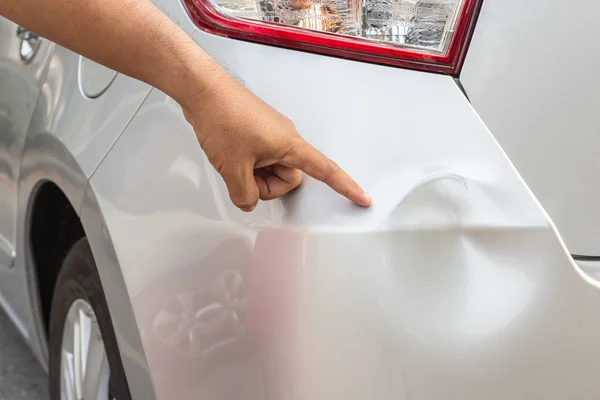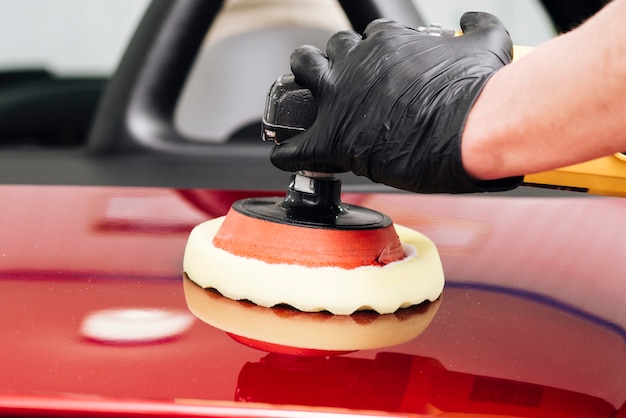The Science Of Silence: How Paintless Dent Repair Quiets Your Ride
In the bustling landscape of modern life, moments of tranquility are a cherished rarity. Amidst the ceaseless hum of activity, there exists a sanctuary where peace reigns supreme - the interior of a well-insulated vehicle. However, this haven of silence can be easily disrupted by an unexpected intruder: dents and dings. Yet, within the realm of automotive innovation, there exists a solution that not only restores the aesthetics of your vehicle but also contributes to the serene atmosphere within - Paintless Dent Repair (PDR).
Delving into the depths of this innovative technique unveils a fascinating convergence of science and craftsmanship, revealing how PDR plays a pivotal role in quieting your ride. From the intricate dynamics of aerodynamics to the subtle nuances of vibrational resonance, the science behind PDR offers insights into the art of silencing automotive noise. Join us as we embark on a journey to explore the intricate mechanisms through which PDR transforms your vehicle into a sanctuary of silence.
Understanding the Basics of Paintless Dent Repair (PDR)
Paintless Dent Repair is a method of repairing minor dents and dings on the body of a vehicle without the need for traditional bodywork techniques that involve sanding, filling, and repainting. Instead, skilled technicians use specialized tools to gently massage the dented area from behind the panel, gradually restoring it to its original shape. This process preserves the vehicle's factory finish and eliminates the need for costly and time-consuming repainting, making it an efficient and environmentally friendly solution.
The Role of Material Properties
One of the key principles underlying Paintless Dent Repair is an understanding of the material properties of automotive body panels. Most modern vehicles are constructed using lightweight yet durable materials such as aluminum or high-strength steel. These materials possess a certain degree of elasticity, allowing them to flex and return to their original shape to some extent when subjected to external forces. Connect with the best paintless dent repair shop in Idaho.

Leveraging the Power of Pressure
Paintless Dent Repair takes advantage of this inherent elasticity by applying controlled pressure to the underside of the dent. By strategically positioning specialized tools and exerting precise amounts of force, technicians can gradually manipulate the metal back into place, effectively erasing the dent without causing any damage to the paint or finish. This process requires a delicate touch and a keen understanding of the material's behavior, making it a skill that takes years to master.
How PDR Reduces Noise
Now, let's explore how PDR addresses this noise issue and contributes to a quieter ride.
Restoring Structural Integrity
One of the primary benefits of PDR is its ability to restore the structural integrity of the vehicle's body. By meticulously massaging out dents and deformities, technicians eliminate the irregularities that disrupt airflow. This smooths out the surface, allowing air to flow more seamlessly over the vehicle, thereby reducing turbulence and minimizing noise generation.

Minimizing Vibrations
In addition to restoring the exterior appearance, PDR also helps minimize vibrations within the vehicle. Dents and deformities can cause panels to resonate at different frequencies, leading to unwanted noise. By eliminating these imperfections, PDR ensures that panels vibrate harmoniously, reducing overall noise levels inside the cabin.
Preserving Factory Sealants and Insulation
Unlike traditional dent repair methods that may involve sanding, filling, and repainting, PDR preserves the factory sealants and insulation of the vehicle. These sealants play a crucial role in dampening noise and vibration, acting as a barrier between the exterior environment and the cabin. By retaining the original sealants, PDR helps maintain the car's acoustic insulation properties, further enhancing noise reduction.
Preservation of Sound Insulation Materials:
Traditional dent repair methods often require the removal of interior panels and insulation materials, which can compromise their effectiveness in blocking out external noise. In contrast, PDR typically involves minimal disassembly, allowing sound insulation materials to remain intact. By preserving these materials, PDR ensures that the vehicle's interior remains well-insulated against external noise, contributing to a quieter cabin environment.
Prevention of Additional Noise Sources:
Dents and dings can create additional noise sources within the vehicle, such as rattling or creaking sounds as metal panels rub against each other. By addressing these imperfections through PDR, these potential noise sources are eliminated, resulting in a smoother and quieter driving experience.
The Science Behind the Quiet Ride
The reduction in noise and vibration achieved through paintless dent repair can be attributed to several scientific principles:
- Structural Integrity: Dents compromise the structural integrity of vehicle panels, leading to increased flexing and movement during driving. By repairing these dents, PDR restores the structural integrity of the panels, reducing flex and minimizing the transmission of vibrations.
- Aerodynamic Efficiency: Dents disrupt the smooth airflow over the vehicle's surface, creating pockets of turbulence that contribute to wind noise. When dents are removed through PDR, the aerodynamic profile of the vehicle is restored, reducing drag and minimizing wind noise.
- Resonance Reduction: Vibrations caused by dents can induce resonance within the vehicle's structure, amplifying noise levels. PDR eliminates these irregularities, reducing the likelihood of resonance and creating a quieter environment inside the cabin.

